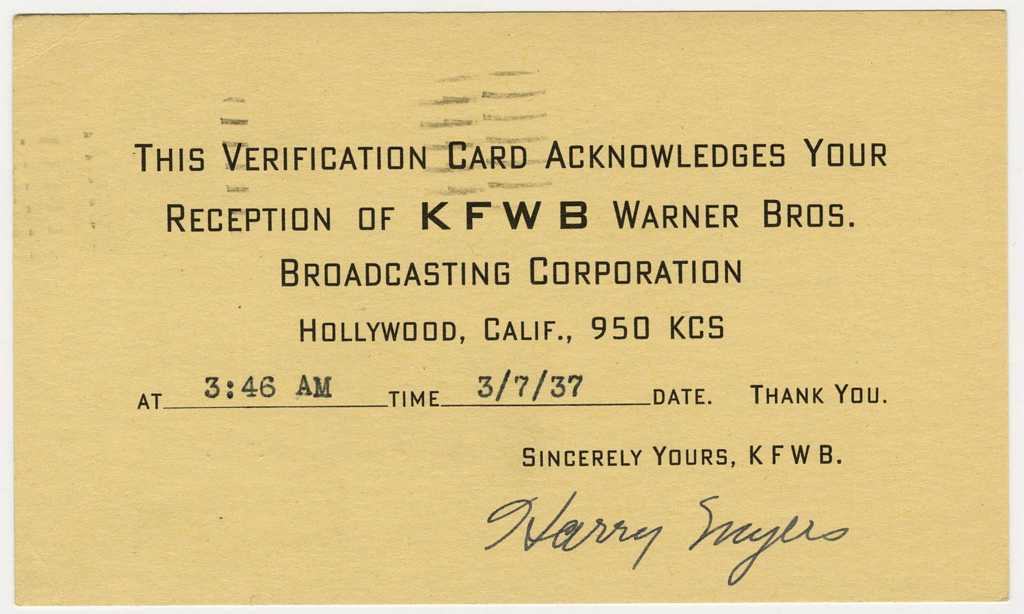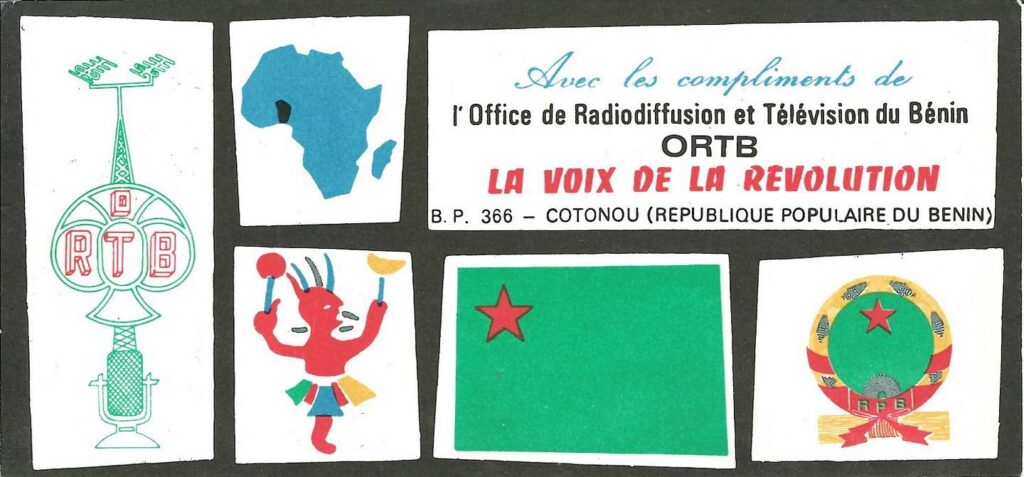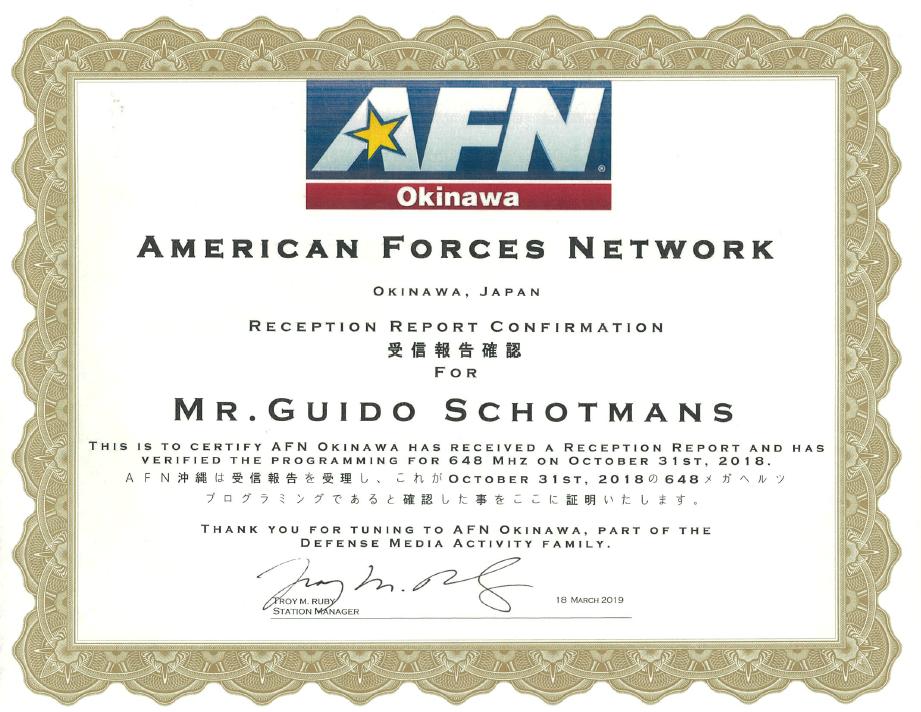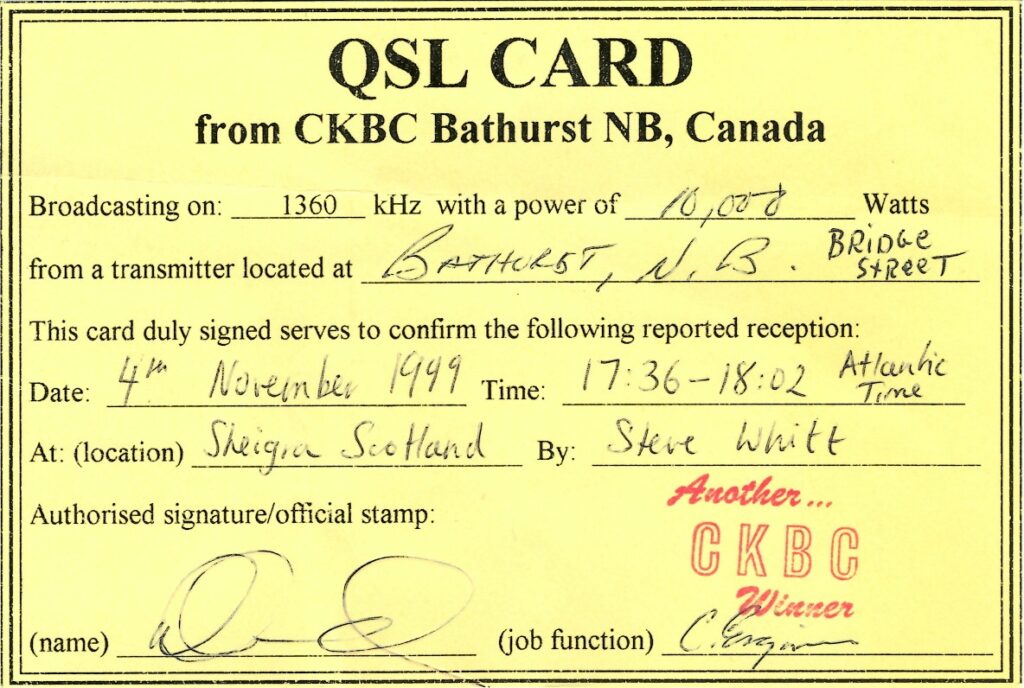8 Reception Reports
QSLs & how to verify your reception
These three letters, QSL, are probably a bit of a mystery to the newcomer, so what do they mean?
Let us suppose you’ve just heard Radio Fiji on your pocket transistor radio. How are you going to convince everyone that you weren’t just dreaming? Wouldn’t it be good to have something from the radio station confirming that you really did hear them?
Well this is where QSL cards come into the picture; a QSL card is usually a picture postcard (although it can also take the form of a letter, a certificate, or a folder, or nowadays an e-mail) sent to a radio listener by a radio station confirming that reception actually took place.
In order to get a QSL card from a station there are several things you need to do, but firstly remember that you have to hear the station and then convince station staff that you did hear their signal.
Background to the QSL

Historically, the QSL originated from the earliest days of radio when stations relied entirely on reports from listeners to determine their coverage area. In fact the letters ‘Q-S-L’ are based upon a radio operators shorthand code (Q code) system that evolved during the early days of radio. Nowadays, however, many stations use reports from professional monitoring stations and have more accurate coverage predictions available, and consequently the QSL survives largely as a service, from the station’s point of view.
Originally receptions reports received by stations were dealt with by station engineers. They understood the technology and propagation and long distance reception. Many engineers were also radio amateurs and so completely au fait with QSLs. Nowadays most MW station don’t have a resident engineer since equipment is much more reliable; that means your reception report could be received by someone else in the station.
Traditionally listeners would write a letter to the station after working out where to send it. Often in order to convince the station that it had really been heard a long way away the DXer would include a C15 cassette recording. And to encourage a reply the DXer would include return postage in the form of International Reply Coupons or mint stamps from the faraway country. This was expensive and replies could take weeks, months or even years to appear.
Nowadays letters are easily replaced with e-mail, cassettes with mp3 files, and QSL cards with electronic replies. And International Reply Coupons hardly exist anymore. That said it is still a nice treat to receive a traditional QSL card in the post even in the 21st century.
Additionally there is a significant difference in QSL policy between the international shortwave broadcaster, which issues QSL cards to maintain contact with and to gauge the size of its audience, and the local medium wave station being heard outside its usual coverage area. At best, the latter will treat a far off reception report with curiosity and will send out a QSL as a public relations exercise. At worst, to a station with few staff and a limited budget, reception reports from DXers can be a downright waste of time.

Top tips for reception report success
It is therefore vital that MW DXers follow these top five tips when sending out reception reports to stations.
TIP: Make your reports really work
If you are one of the many MW DXers who not only likes to hear a station but wants to collect a verification or QSL to ‘prove’ that reception actually took place, then you’ll appreciate that hearing the station in the first place is only half the problem. I’m sure that you’ve wondered why not every station replies to your letters or reception reports.
Perhaps under 50% of MW stations reply; what can be done to increase this ratio ? Many MW broadcasters (in contrast to their SW counterparts) are not interested in audiences in far flung places since their local double glazing advertiser is unlikely to extend his sales overseas! Firstly imagine yourself in the position of the station engineer and then imagine you received a letter from a faraway listener asking for a QSL card. Could you be bothered to reply if you’ve already received a hundred similar items in your in-tray that week?
I know of station engineers that have commented ‘… some of the reports we get are terrible..’, ‘… ’, and ‘… I always reply to DX reports but never know if my letters are received..’
What a listener needs to do is to convince the station that reception really took place and that the report is not just being made up. In addition you need to make the station’s task in replying as simple as possible and it always helps to make your reception report stand out from the crowd so that perhaps it won’t end up in the waste bin’. Try these steps to good reception reports:

TIP: Convince the station
Include full details of commercials, and public service announcements that you heard since virtually all stations record these details in their logs. Station slogans won’t on their own convince anyone since they are often well-known and widely reported and also lists of records heard are not always very useful since details aren’t always kept in station logs. Other useful information might include local traffic and weather reports. Worst of all is something like ‘man talking..’ or ‘music’ which won’t help convince anyone! The golden rule is the more detail the better.
TIP: Make their job easier
Use the station’s local time in reception reports so that they don’t have any tricky time zone conversions to do. The only exception is if the station is an international broadcaster that has been announcing a different time zone (e.g GMT or UTC) on air. If you send a report by post type rather than handwrite as it is easier to read.
Always send return postage with your letter. Best of all include mint stamps from the station’s country but this is easier said than done. For the USA and many other countries you can instead send a US$1 bill since hard currency is often appreciated. Enclose a prepared sticky label with your return address already on it to avoid hand writing errors. Write in the station’s natural language unless it is a big international broadcaster with various language departments. The natural language may not be the main language of the country they are in (e.g. Spanish speaking stations located in the USA). Nowadays Google translate is useful except when writing the technical bits.
Alternatively use email as the faster and cheaper means of communication. It can also make it easier for your email to be routed to the right person at the station especially if they are in a different building. That said, there is something special about having a “real” QSL card from a distant part of the world in your hands.
Many stations don’t actually have a QSL card or similar, so some DXers help the station by creating a bespoke pre-prepared QSL for the station to merely complete and return. That saves everyone time and increases the chance that a station will reply to your reception report. In the past the DXer would post the card to the station for completion and return by post. Today, this can of course be done by e-mail.

TIP: Help the station
Local MW stations don’t need listeners thousands of miles away; certainly they don’t attract more advertising because of this. So if you can help the station with constructive comment on programmes (what you liked and disliked) and on technical quality (e.g. modulation, audio quality or frequency stability) or by identifying interference, so much the better.
Engage with programming you heard; did you enjoy the music or was the programming interesting?
Explain why you are asking for a QSL or confirmation of reception – what does it mean to you if you get a reply?
TIP: Make your report stand out
If you write a letter, use commemorative or unusual stamps on the envelope – most mail received by the station these days will be pre-franked business post, so your letter will definitely stand out. Unfortunately in some parts of the world this might also make your letter attractive to thieving hands in the postal system.
If you use email sadly stations will get hundreds every day so it is harder to make yours stand out from the business emails and undoubted spam that fills their inboxes.
BE POLITE and request a QSL card or verification – never demand one. Introduce yourself and your location; maybe include a local picture postcard or some stickers from your local radio stations. With email it is easy to add a few electronic photos as well as recorded audio, or even a 15 second video of your shack.
Give a realistic and detailed description of reception conditions in words that are not too technical (remember it’s not always the engineer reading your letter). Never use SINPO style codes on their own.

Finally
If you follow all of these tips you should not only increase your chances of getting a reply from a station but you will help contribute to good relations between DXers and broadcasters. If you receive a reply from a station it is an often over-looked basic courtesy to thank them. Research during a Radio Netherlands Media Network edition revealed that very few listeners bother to say ‘thanks’, and yet it makes all the difference.
- Be polite; request, never demand, a QSL or a reply
- Introduce yourself; who are you, where live, family photo and shack photo may well end up on the wall in the station
- Explain our hobby; your report might be reaching a young or new member of staff at the station who has never heard of a QSL
- When you do get a response always follow up with a thank you; ideally something that reflects you and where you are listening
Finally please remember you are also an ambassador for the hobby. If your reception report gives a bad impression you won’t get a reply and, worse than that, you’ll tarnish the reputation of DXers who follow you.
If may seem like hard work, but when you get your first QSL card back you’ll certainly want to treasure it.